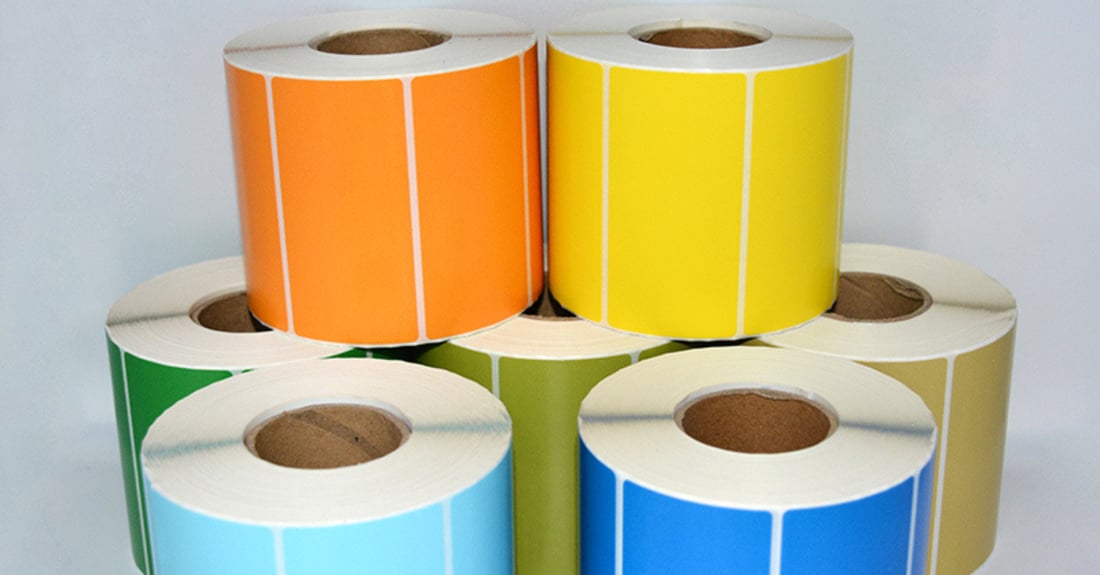Introduction: What are Color Labels?
Color labels are a valuable tool used in organizing and identifying various items. They are small adhesive labels that come in different colors, allowing for easy categorization and differentiation. Color labels are commonly used in a variety of settings, including offices, warehouses, schools, and homes. In this article, we will explore the various applications and benefits of color labels, as well as provide tips on how to effectively use them.

The Role of Color Labels in Organization
Color labels play a crucial role in organization by providing a visual cue that helps individuals quickly identify and locate specific items. Whether it's filing documents, sorting inventory, or organizing personal belongings, color labels can simplify the process and save valuable time. By assigning different colors to different categories or groups, it becomes easier to visually distinguish between them at a glance.
Enhancing Efficiency with Color Labels
One of the key benefits of using color labels is the increased efficiency they offer. When items are clearly labeled with color-coded labels, it becomes easier to find what you need without the need for extensive searching. This is particularly useful in fast-paced work environments where time is of the essence. By reducing the time spent searching for items, productivity can be significantly improved.
Color Labels in Inventory Management
In the realm of inventory management, color labels are indispensable. They can be used to categorize products based on various criteria such as size, type, or expiry date. By using color labels, warehouse workers can quickly locate items and ensure that products are stored and shipped in an organized manner. This not only streamlines operations but also minimizes the risk of errors and delays.
Color Labels for File Organization
File organization is another area where color labels shine. By assigning different colors to different file categories or departments, it becomes much easier to locate specific documents. Whether it's in a filing cabinet or a digital folder structure, color labels can help individuals navigate through a large number of files with ease. This is particularly useful in offices where multiple people may need access to the same files.
The Psychological Impact of Color Labels
Color labels not only serve a practical purpose but also have a psychological impact on individuals. Different colors can evoke different emotions and create associations in our minds. For example, using red labels for urgent or important items can signal a sense of urgency, while using green labels for completed or approved tasks can create a sense of accomplishment. By leveraging the psychology of colors, color labels can enhance motivation and overall work satisfaction.
Color Labels in Educational Settings
In educational settings, color labels can be a valuable tool for both teachers and students. For teachers, color labels can be used to categorize teaching materials, making it easier to find and retrieve specific resources. For students, color labels can help organize their school supplies, textbooks, and assignments, enabling them to stay organized and focused on their studies.
Color Labels for Personal Organization
Color labels are not just limited to professional settings; they can also be used for personal organization. Whether it's sorting items in your pantry, organizing your wardrobe, or labeling storage containers in your garage, color labels can bring order and structure to your daily life. By assigning specific colors to different categories, you can easily find what you need and maintain a clutter-free living space.
Tips for Using Color Labels Effectively
To make the most of color labels, here are some tips to keep in mind:
- Choose a color-coding system that makes sense to you and others using it.
- Be consistent with your color choices to avoid confusion.
- Use clear and concise labels that are easy to read.
- Consider using additional labels or symbols to provide more information.
- Regularly review and update your color-coding system as needed.
Conclusion
Color labels are an invaluable tool for organizing and identifying various items. Their visual nature allows for quick and efficient categorization, enhancing productivity and reducing the time spent searching for items. Whether in professional or personal settings, color labels can bring order and structure to our daily lives. By understanding the role and benefits of color labels, we can harness their power to create a more organized and efficient environment.

